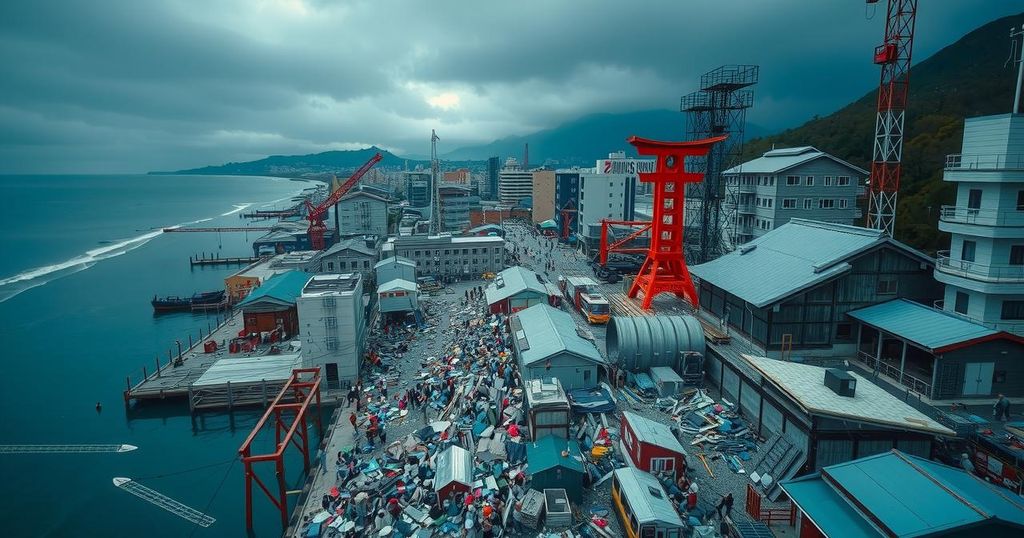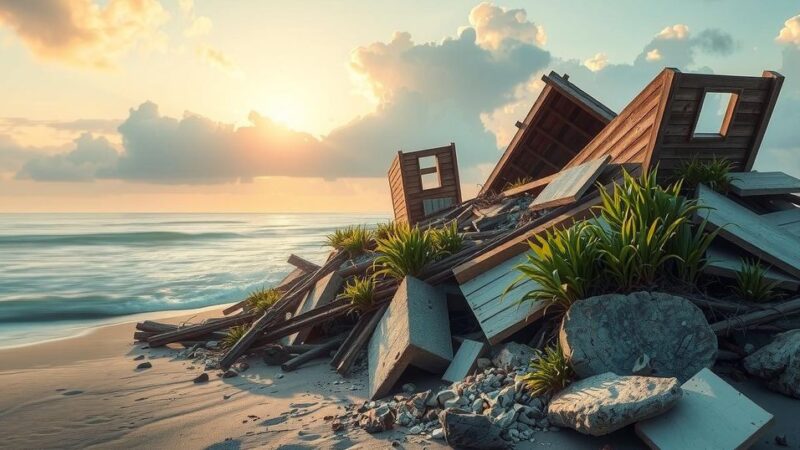The 2011 earthquake and tsunami in Japan caused unprecedented destruction and loss of life, with nearly 18,500 confirmed deaths and significant nuclear emergencies following the disaster. The devastation primarily impacted coastal areas, particularly Miyagi prefecture, while raising global concerns over nuclear safety measures and recovery capacities in disaster-stricken regions.
The 2011 earthquake and tsunami in Japan marked one of the most catastrophic natural disasters in the nation’s history. The initial crisis began on March 11, 2011, when a massive undersea earthquake struck off the northeastern coast of Honshu, triggering a tsunami that devastated coastal towns and cities. Following the disaster, casualty reports indicated thousands missing, with the death toll initially rising to over 10,000 within weeks. The processes of rescue and recovery unveiled the true extent of the devastation, with the official figures ultimately estimating approximately 18,500 confirmed fatalities, while other assessments suggested numbers could exceed 20,000. The tsunami waters inundated large areas, sweeping away homes, vehicles, and agricultural land, causing unimaginable loss of life, particularly among the elderly. Miyagi prefecture was hit hardest, suffering approximately 10,800 deaths or missing persons. In addition to the tsunami, the earthquake itself caused significant physical destruction across regions, resulting in fires, partial or complete home demolitions, and severe disruptions to infrastructure, which were exacerbated by aftershocks. The nuclear plants in the region faced alarming challenges due to the earthquake and tsunami. Notably, the Fukushima Daiichi Nuclear Power Station suffered catastrophic failures despite emergency shutdown protocols, as the tsunami intervened and compromised power sources for cooling systems, leading to partial meltdowns in multiple reactors. These represented a potential public health crisis, resulting in the establishment of evacuation zones and stringent restrictions on airspace nearly 30 kilometers around the facility. Subsequent radiation contamination concerns prompted substantial evacuations and generated international alarm regarding food and water safety in Japan. Despite assertions in late 2011 that the Fukushima Daiichi plant was stabilized, the facility has continued to contend with issues of radioactive leaks, some identified as significant enough to evoke further scrutiny from Japan’s Nuclear Regulation Authority. The ongoing radioactive leaks from the facility have amplified concerns about long-term environmental impacts and community health risks. In parallel, numerous cities and towns have been engaged in the painstaking process of recovery, rebuilding even as the nation collectively navigated the profound implications of this dual disaster.
The 2011 disaster comprised a complex sequence of events initiated by a powerful earthquake, which ultimately led to severe tsunami waves that struck Japan’s Pacific coast. The aftermath saw extensive searches for victims and evaluations of the destruction to coastal communities and critical infrastructure. Moreover, the crisis was compounded by a nuclear emergency, as multiple reactors in the affected region experienced catastrophic failures, necessitating immediate and ongoing responses from government officials, emergency services, and nuclear experts. This disaster has since influenced international discussions regarding tsunami preparedness and nuclear safety protocols.
The 2011 earthquake and tsunami resulted in profound human and infrastructural losses within Japan, revealing the vulnerabilities of coastal communities to such natural disasters. The nuclear crisis at the Fukushima Daiichi facility highlighted the potential worldwide implications of nuclear power in the face of extreme environmental events. While recovery efforts have progressed, debates regarding preparedness, response strategies, and environmental safety continue to shape Japan’s future policy decisions. The lessons learned from this dual catastrophe remain pivotal in fostering global resilience against similar disasters.
Original Source: www.britannica.com







